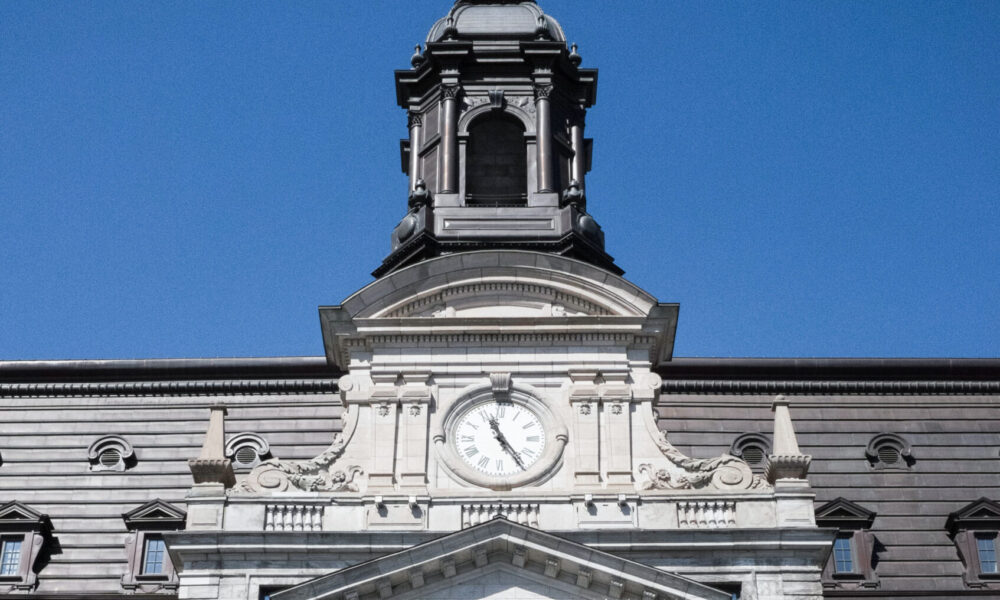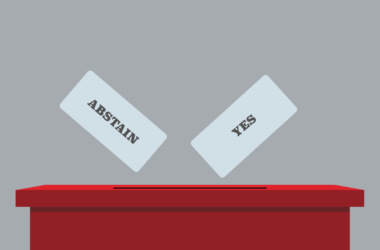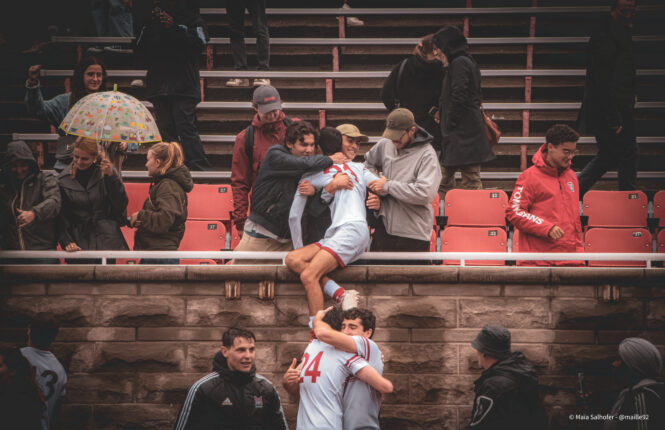Montreal’s city hall recently took down a welcome sign in its lobby that portrayed a woman in a hijab, less than a year after its installation. This decision comes amid a series of changes implemented under Quebec’s Bill 21 and the continued movement towards secularization—the separation of public institutions from religious influences through legislation intended to enforce religious neutrality.
Montreal Mayor Valérie Plante defended the decision to remove the sign by citing the “discomfort” it caused and the overarching desire to secularize public institutions. However, this raises an important question: What exactly does it mean to experience discomfort when seeing a veiled person?
If a depiction of a person wearing a hijab on a wall makes one uncomfortable, then surely a walk down rue Ste.-Catherine must be unbearable. After all, nearly 12 per cent of Montreal is Muslim. Representing this reality in public art has no bearing on the secularization of public institutions, nor should it produce unease. The welcome sign was simply an accurate depiction of Montreal’s religious and cultural diversity—something lawmakers should regard with pride rather than discomfort, especially considering Canada’s commitment to multiculturalism.
The targeted nature of Quebec’s commitment to secularism shows in its inconsistencies. Consider, for example, the Mount Royal Cross. Proponents of Bill 21 argue the cross does not exist in the public sector, making it appropriate, and transcends religion in its emblematic significance—points that are not without reason. However, the religious implications of displaying a 103-foot-tall LED-lit symbol of the Catholic Church overlooking the city are glaringly obvious.
Yet, the monument is exempt from secular legislation as a symbolic element of Quebec’s cultural heritage. The desire to protect an integral aspect of the city’s cultural identity is legitimate. But could the same not be said about Montreal’s Muslim population? The value of Muslim culture extends far beyond faith: It represents a deep-rooted part of Montreal’s evolving cultural identity as a religiously pluralistic city.
Many would mourn the loss of the Mount Royal Cross—the elimination of Muslim individuals in hijabs in art should engender a comparable reaction. The lack of such a response begs the question: Is the discomfort Plante describes from the depiction of a religious symbol, or from the depiction of a hijabi? The persistence of this double standard suggests an anti-Muslim motivation hiding within so-called “neutrality.”
Parti Québécois Leader Paul St-Pierre Plamondon went as far as to describe the welcome sign as an example of religion “invading” the public sphere; but how can something invade a space it has long been a part of? A public sphere encompasses all aspects of social existence. To designate religion as an invader is to say religious minorities have no place in Montreal beyond the confines of their own homes.
But the reality is this: Muslim hijabis are here—as are dastar-wearing Sikhs and Jews in kippahs. These are all real communities with active roles in Montreal’s daily life. The use of barbed language like “invading” or “discomfort” reflects a typical xenophobic line of thought, one that validates anti-Muslim sentiment by implying that individuals wearing hijabs, and by extension Islam, are inherently alien. The term “invasion” misrepresents history as well, implying that the city’s public spaces were once purely secular and are now suddenly under siege. While it’s true that Quebec once used secularism to sever the corruption of religion-affiliated organizations from their governance, as seen in the Quiet Revolution, it now uses it to justify xenophobia.
The freedoms of conscience and equality are very important, but the use of legislative pretext for discriminatory action does little to protect these freedoms. If anything, actions like removing the welcome sign distance Quebec from the state of religious neutrality it craves. Such an approach risks secular fundamentalism that disproportionately targets visible religious minorities, ultimately undermining its purpose of secularizing the province in a fair and non-sectarian manner. It’s important to recognize that despite current secularization movements, Montreal always has been and always will be multi-religious—a characteristic that enriches a city, not devalues it.









